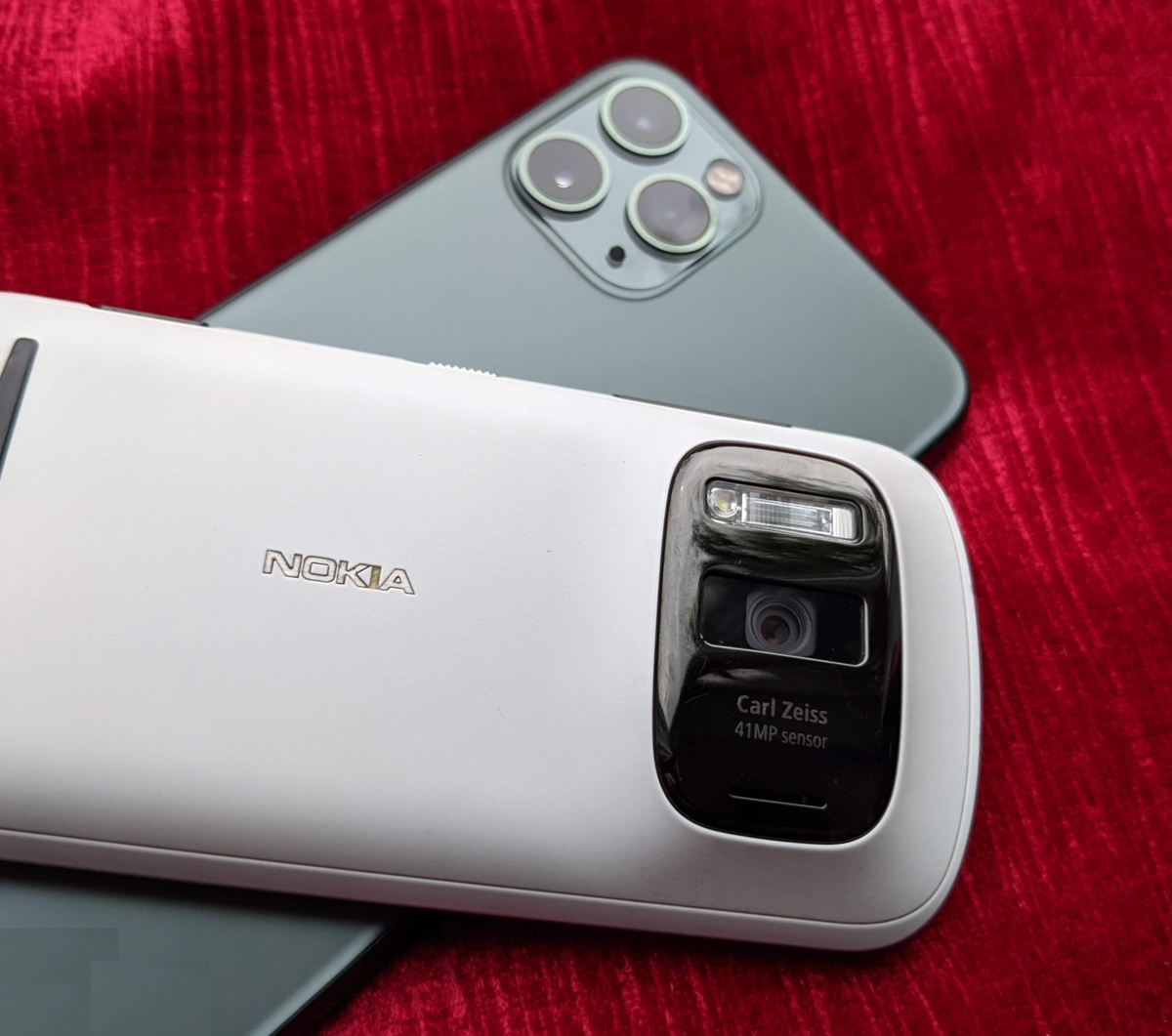
The Nokia 808 PureView's raw imaging specs are a mixed bag, seen from seven years in the future. Yes, the megapixel count is still impressive, yes, the oversampling system has never been bettered, yes, the sensor is a whopping 1/1.2", and yes, there's a proper Xenon flash.
But on the other hand the sensor is 2012 vintage and not even BSI (BackSideIlluminated), so all fairly primitive in terms of electronics. Plus there's no attempt at OIS, with the lenses being too large to stabilise mechanically. Heck, the 1020 had smaller optics and still had to use a proprietary ball-bearing suspension system!
And in the meantime, sensor tech has been improving. Most of all though, the amount of computing power has gone through the roof, with the test Apple iPhone 11 Pro here (the best camera system in a modern phone, arguably) able to shoot multiple exposures for a test shots, combine them in a number of clever ways, apply AI to recognise textures and details and apply appropriate pixel-level adjustments. It's all very clever.
But, a fair few readers wanted to know, how would the Nokia 808 PureView fare in a tough fight with the best of today? So I rustled up some (mainly low light) scenes, gave the 808 the assistance of a tripod (which I think is fair, given the lack of OIS), and the results are below. Note that I used the 808's '8MP' oversampling mode (found in 'Creative') so that the crops would match more closely with the iPhone's.
In terms of tech specs:
| iPhone 11 Pro (2019) | Nokia 808 PureView (2012) |
|
12 MP, f/1.8, 1/2.55", dual pixel PDAF, OIS |
41 MP, oversampling to 5MP, f/2.4, 1/1.2", contrast-based AF, Xenon flash |
Let's use our Famed Interactive Comparator (FIC). All 1:1 crops are at 900x500 for comparison, though I've put up the originals on my own server, for you to download if you want to do your own analysis.
| Note that the interactive comparator below uses javascript and does need to load each pair of images. Please be patient while this page loads, if you see a pair of images above each other than you've either not waited long enough or your browser isn't capable enough! You ideally need a powerful, large-screened tablet or a proper laptop or desktop. This comparator may not work in some browsers. Sorry about that. On Windows 10 Mobile, use the 'AAWP Universal' UWP app, which handles the comparator very competently (see the tips in the app's help screens) |
Test 1: Daylight nature
Before delving into tricky low light shots, I wanted to test the purity of the two devices capturing nature - and under daylight conditions - I couldn't manage sunshine, this being the UK in winter! You can tell a lot about a camera phone's image processing by looking at how it captures nature, and in particular grass, leaves, etc. Here's the overview shot from the iPhone 11 Pro, though the actual scene to my eyes was 'gloomier'!:
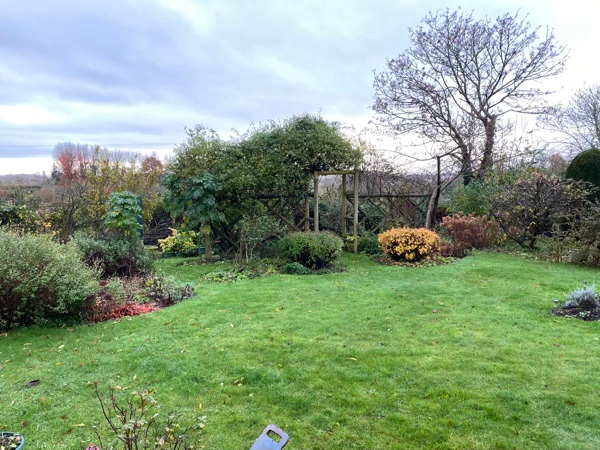
You can grab the original photos here from my own server, from the iPhone 11 Pro and the Nokia 808, for your own analysis, just click on the phone names to grab their images. Note that the iPhone produces modern HEIC files rather than JPG, but both Windows and Mac can now handle these formats, so you should be OK.
Looking in this case at the pixel level, here are 1:1 crops, firstly the iPhone (top) and then the old Nokia (bottom) - just wait to make sure the page has fully loaded and then use your mouse or trackpad pointer to compare the images:

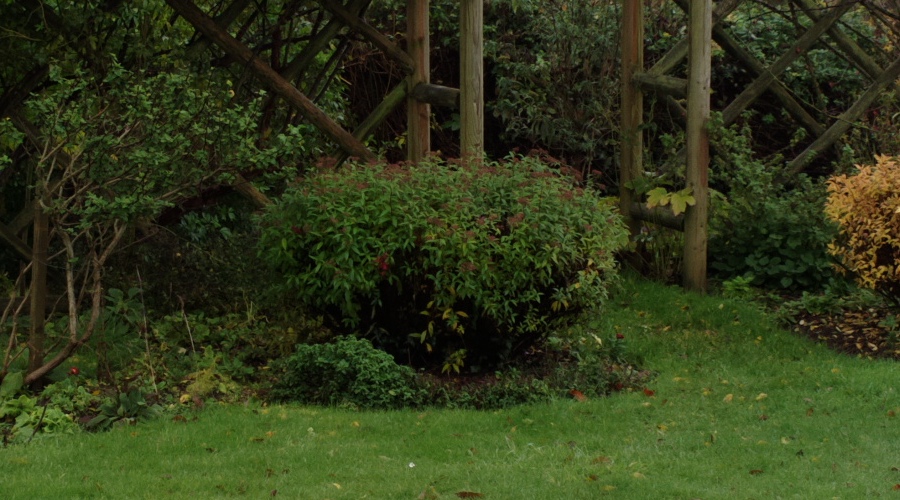
All very interesting. The iPhone 11's image processing is very much on the 'lighter' side when compared to phone cameras from Samsung, Huawei, (the new) Nokia, and others, yet there's still significantly more sharpening than the 808's (by definition) 'pure' output. Having said that, there's so much more dynamic range and general light gathering - and I think that even here at the pixel level most people would pick out the iPhone crop as 'better'.
From a purist's point of view, there IS more natural detail in the Nokia 808 image, and some work in Photoshop or similar could bring out something brighter and with more 'pop'. But at the same time props to the iPhone 11 Pro for enhancing detail without going too far overboard.
Hard to score this one, but I'm giving the 808 the win from the point of image quality.
Scores: iPhone 11 Pro: 8 pts; Nokia 808 PureView: 9 pts
Test 2: Indoor detail
At the end of a fairly typical living room (lights on at the other end), an antique clock, with loads of detail. Here's the overview shot from the iPhone 11 Pro:

You can grab the original photos here from my own server, from the iPhone 11 Pro and the Nokia 808, for your own analysis, just click on the phone names to grab their images. Note that the iPhone produces modern HEIC files rather than JPG, but both Windows and Mac can now handle these formats, so you should be OK.
Looking in this case at the pixel level, here are 1:1 crops, firstly the iPhone (top) and then the old Nokia (bottom) - just wait to make sure the page has fully loaded and then use your mouse or trackpad pointer to compare the images:

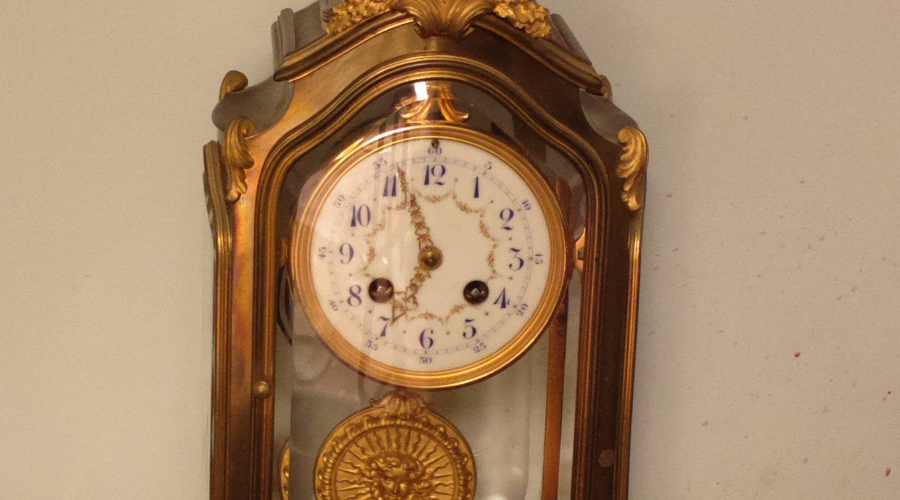
Side note: don't worry about the red splodges on the right of the 808's crop - these are, believe it or not, splashes of candle wax that I hadn't noticed with my naked eye! Both phone cameras do a good job here, I'd again give the edge to the 808 for a more natural, less 'processed' look, but the iPhone 11 Pro does pretty well at - again - not overdoing things. Yes, it tries to bring out texture where there is none (the wall), yes, it adds contrast a bit too vigorously and perhaps sharpens things again. But the small numbers on the ring of the clock face are much more visible than from the 808 and - again - a casual viewer would instantly pick out the iPhone's image as clearer and more useful.
A score draw overall. Natural look versus clearer and punchier. Take your pick!
Scores: iPhone 11 Pro: 9 pts; Nokia 808 PureView: 9 pts
Test 3: Party time!
My typical 'moving human in low light, but with flash enabled' mock-up/test! It's a common real world scenario and phone cameras always struggle. Here's the overview shot from the iPhone 11 Pro:

Looking in this case at cropped and scaled image, there's - as usual - no point in looking at the pixel level on 'social' mock-ups of people, as here. Firstly the iPhone (top) and then the old Nokia (bottom) - just wait to make sure the page has fully loaded and then use your mouse or trackpad pointer to compare the images:


I should point out that I wasn't posing at all, I was deliberately mocking up a subject moving in low light - and this shows that the iPhone 11 Pro does well, but there's still some motion blur in its 1/4s exposure. In fact, you'd see a lot more, except that the phone shoots multiple shots in this period and then tries to eliminate movement. Not 100% successfully, but it does better than most other phone cameras in my experience.
Meanwhile, the Nokia 808 PureView's (cough) Xenon flash floods the scene with light in 10 microseconds, and as a result the shot is perfectly frozen - a little extra work in Photoshop or similar to brighten the shot up and you'd be done.
Scores: iPhone 11 Pro: 7 pts; Nokia 808 PureView: 9 pts
Test 4: Night time
A church at night, with parts floodlit, shot at about 30 metres. Here's the overview shot from the iPhone 11 Pro:
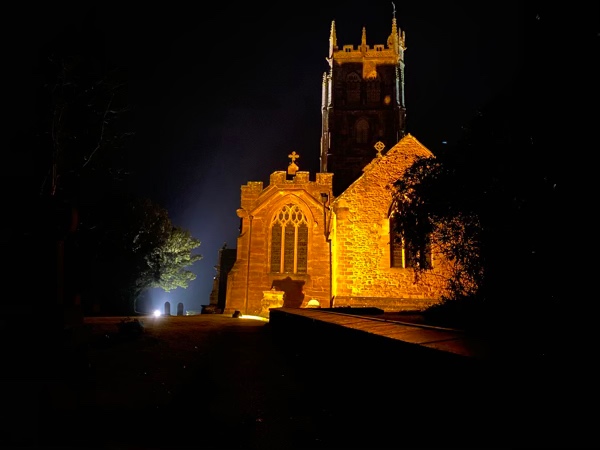
You can grab the original photos here from my own server, from the iPhone 11 Pro and the Nokia 808, for your own analysis, just click on the phone names to grab their images. Note that the iPhone produces modern HEIC files rather than JPG, but both Windows and Mac can now handle these formats, so you should be OK.
Looking in this case at the pixel level, here are 1:1 crops, firstly the iPhone (top) and then the old Nokia (bottom) - just wait to make sure the page has fully loaded and then use your mouse or trackpad pointer to compare the images:
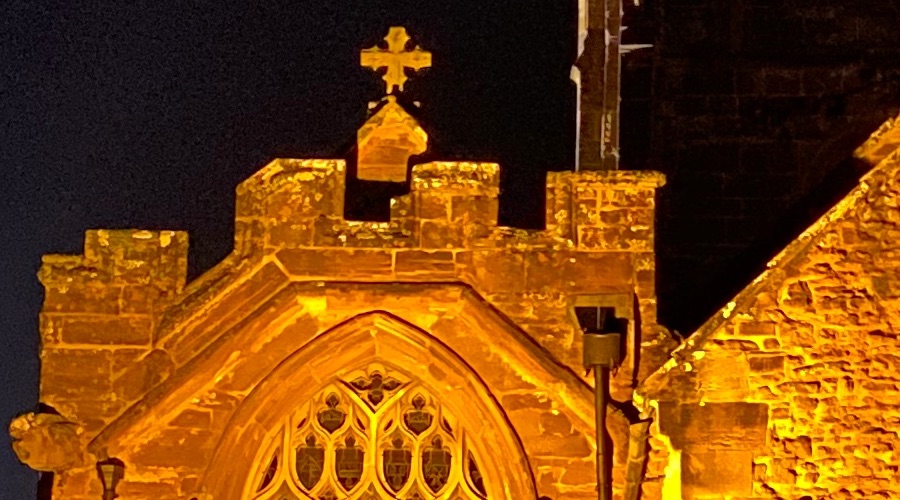
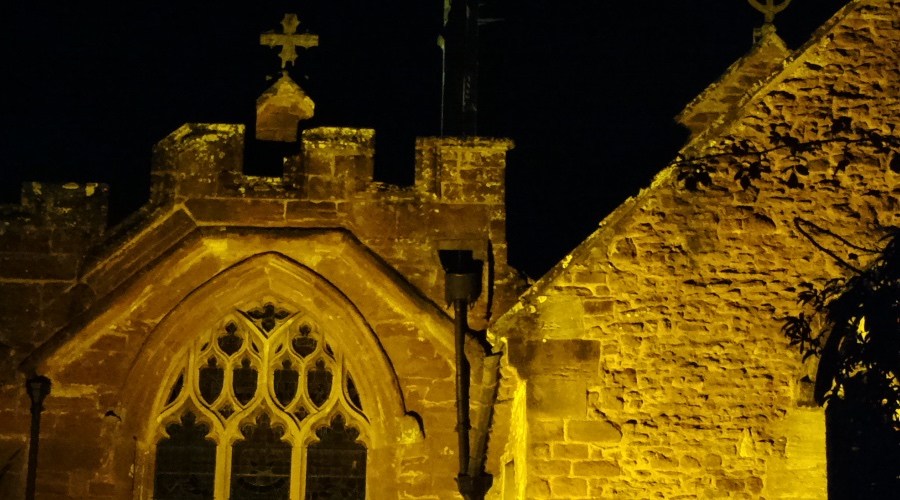
The seven year old Nokia 808, stabilised on a tripod, does pretty well, at least looking at this central crop, but even here you can see how much more light and information the much more modern iPhone is gathering. A win for the newer device, I think. The colouring's interesting though, with big differences in how the flood lights are represented. To my eyes, the 808's is too pale and the iPhone's too yellow!
However, there's more to this scene than just a central crop, so see below!
Scores: iPhone 11 Pro: 9 pts; Nokia 808 PureView: 8 pts
Test 5: Night time, whole frame
The same photos, but this time looking at exposure and dynamics across the whole frame, since there are significant differences.
Here are scaled versions, firstly the iPhone (top) and then the old Nokia (bottom) - just wait to make sure the page has fully loaded and then use your mouse or trackpad pointer to compare the images:
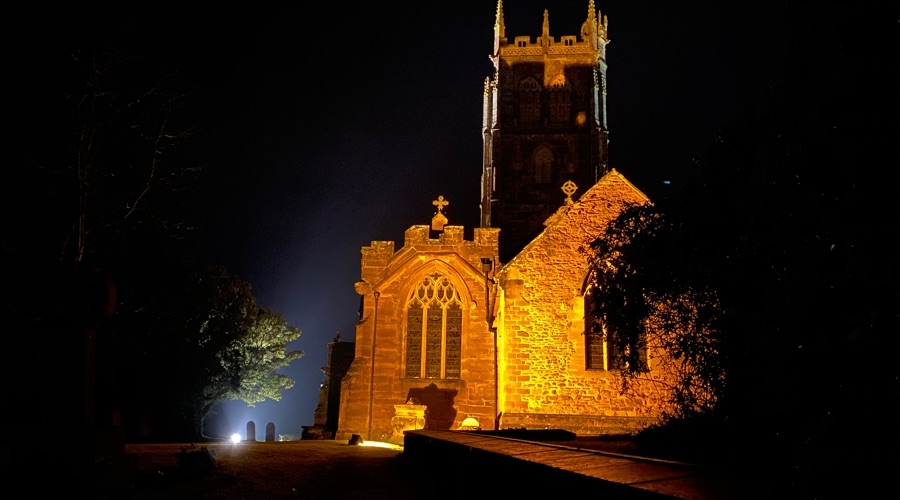
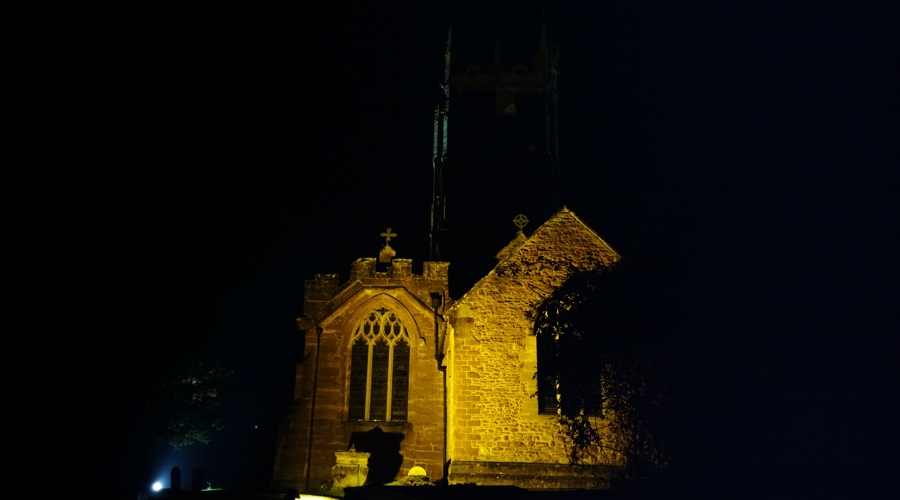
The wider aperture, plus the newer sensor and multi exposure technology, all play a part in delivering a scene with more light, more colour, and a ton more atmosphere for the iPhone 11 Pro. A definite win.
Scores: iPhone 11 Pro: 10 pts; Nokia 808 PureView: 8 pts
Test 6: More night, more mood
Further back in the churchyard, some moody graves and another floodlight. Here's the overview shot from the iPhone 11 Pro:
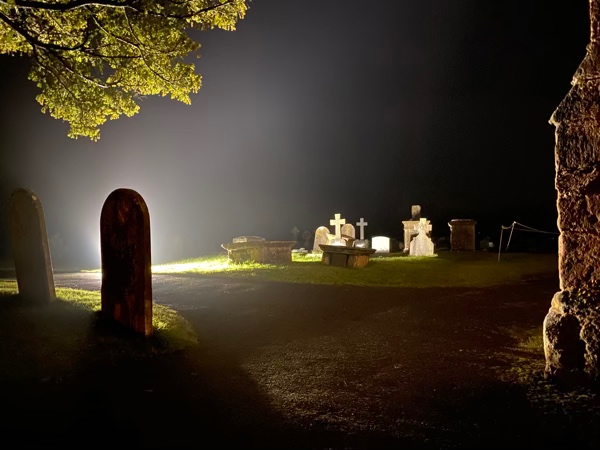
You can grab the original photos here from my own server, from the iPhone 11 Pro and the Nokia 808, for your own analysis, just click on the phone names to grab their images.
Looking in this case at the pixel level, here are 1:1 crops, firstly the iPhone (top) and then the old Nokia (bottom) - just wait to make sure the page has fully loaded and then use your mouse or trackpad pointer to compare the images:

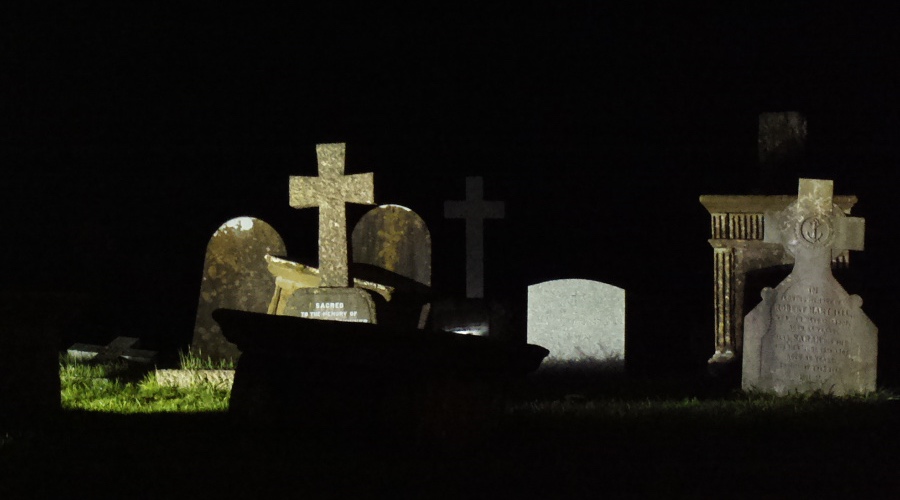
Maybe the iPhone tries just a little too hard on the light gathering front - and there are a couple of spots which are blown out, but on the whole it manages to bring items from the dark scene which just aren't visible in the Nokia 808's rendition. In particular foreground elements which aren't even lit at all - the multi-exposure system allows for almost infinite dynamic range and night time HDR.
However, again there's more to this scene than just a central crop, so see below!
Scores: iPhone 11 Pro: 9 pts; Nokia 808 PureView: 7 pts
Test 7: Night time, whole frame
The same photos, but this time looking at exposure and dynamics across the whole frame, since there are significant differences.
Here are scaled versions, firstly the iPhone (top) and then the old Nokia (bottom) - just wait to make sure the page has fully loaded and then use your mouse or trackpad pointer to compare the images:
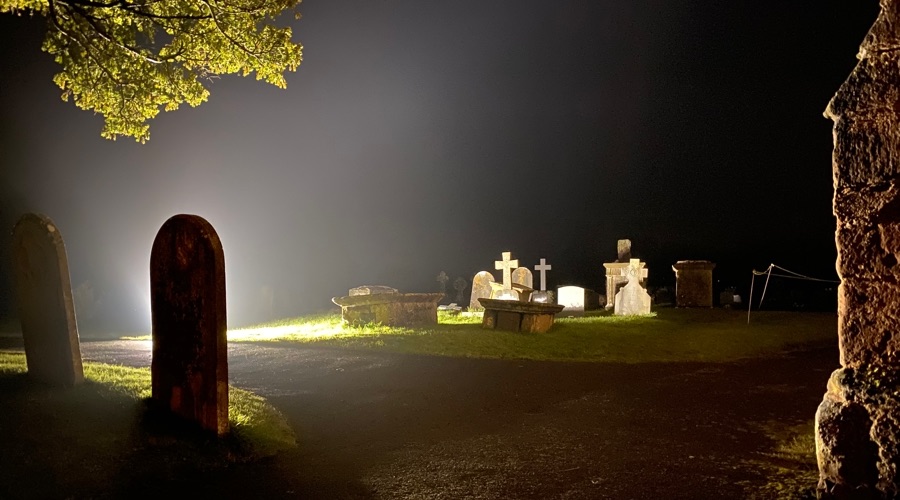

Again, almost unbelievable quality, dynamics and colour from the iPhone 11 Pro. It's amazing how far phone camera tech has come. When the Nokia 808 came out, its rendition above would have been compared to 'almost completely black' from other phones of the time. And now it is itself outclassed.
Scores: iPhone 11 Pro: 10 pts; Nokia 808 PureView: 7 pts
Test 8: Addendum: Zoom!
I'd held off doing this because the weather's been appalling. But it's brighter as I write this (though not full sun), so I'm slipping in an extra zoom test, by request from the comments. Here's a 2x zoomed shot across the garden, from the iPhone 11 Pro:

You can grab the original zoomed photos here from my own server, from the iPhone 11 Pro and the Nokia 808, for your own analysis, just click on the phone names to grab their images.
Looking in this case at the pixel level, here are 1:1 crops from the zoomed photos, firstly the iPhone (top) and then the old Nokia (bottom) - just wait to make sure the page has fully loaded and then use your mouse or trackpad pointer to compare the images:


Of course, using zoom on the Nokia 808 means doing without any PureView oversampling, with the result that everything looks a bit indistinct - this is what the tiny pixels in the 41MP camera are really putting out, as it were. Still natural, but not as stunningly pure as when not zooming.
The much more modern iPhone's 2x telephoto lens does better, but mainly just in the image processing, in terms of enhancing sharpness and colour. Does the iPhone go too far? For zoomed shots like this, perhaps yes - I'd have liked a middle ground between the ultra-raw, unprocessed look of the 808's zoom photo and the more artificial version from the iPhone 11 Pro. Honours even though, there are aspects of each approach which I like.
Scores: iPhone 11 Pro: 8 pts; Nokia 808 PureView: 8 pts
Verdict
Adding the points together, just for fun(!), we get:
- Apple iPhone 11 Pro (2019): 70 pts (/80 maximum)
- Nokia 808 PureView (2012): 65 pts
None of which should be too surprising. Though it's worth noting that I was utterly cheating in that the Nokia 808 PureView was on a tripod for the low light shots here, to compensate for its lack of stabilisation, while even the night shots on the iPhone were taken casually, handheld, no tripod needed. Making the results even more remarkable. If I had been made to shoot all the 808 shots handheld, presumably standing as still as possible or resting the phone on a wall or rock, the 808 would be another 10 points back, I estimate.
Comments welcome from AAS and AAWP readers. It's true that we still don't have a really 'pure' modern camera flagship, but the iPhone 11 Pro comes as close as we can currently get, with the added advantage of wide angle and zoom lenses (not tested here), plus stunning captures through sheer computational power in all light situations.
PS. Credit to the Nokia 808 overall, mind you. The very fact that I'm able to meaningfully compare a seven and a half year old phone's camera to a current flagship is a mindblowing concept and shows how far the 808 and Lumia 1020 were ahead of their time.
PPS. I also have the equally small Google Pixel 4 here, though this is currently crippled by biometric issues and awaiting updates over the next few months. But its camera is also excellent and results aren't too different from those here. I'll return to the Pixel 4 if there's enough demand as we get closer to Christmas.
